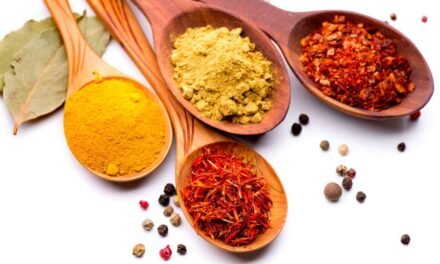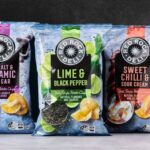The spices market is entering a transformative phase, where tradition converges with innovation – driven by growing consumer demand for authentic flavours, clean-label products, and health-focused ingredients. To harness this momentum, stakeholders must emphasise product quality, supply chain transparency, sustainable sourcing practices, and informed consumer engagement, opines Saleem A. Taqvi.
The global spices market is experiencing a significant transformation as consumer preferences shift toward authentic flavours, natural ingredients, and health-enhancing products. Once regarded primarily as culinary enhancers, spices are now widely recognised for their medicinal, nutritional, and sensory benefits. Influenced by cultural diversity, globalisation, and wellness trends, the demand for spices has surged across households, food processing industries, restaurants, and health-conscious consumers. This comprehensive market outlook explores key trends, growth drivers, applications, and the increasing role of spices in shaping modern consumption patterns.
The Growing Significance of Spices in Modern Lifestyles
Spices have played a crucial role in human civilisation for centuries—not only enhancing food flavours but also providing therapeutic, medicinal, and preservative benefits. In recent years, the perception of spices has evolved significantly. Consumers now demand food products that deliver authenticity, bold flavours, and proven health benefits. This shift is driven by an increasing global focus on holistic well-being, a strong movement away from synthetic additives, and a marked preference for natural health solutions. This is where the clean label spices market is gaining strong traction, as consumers turn to transparent ingredient lists and naturally derived flavours.
As of 2025, the global spices market continues to expand robustly. According to Persistence Market Research, the market is projected to grow from USD16.4 billion in 2025 to USD24.2 billion by 2032, recording a compound annual growth rate (CAGR) of 5.7% over the forecast period. This growth reflects rising consumer interest in natural spices and herbs, which are perceived to boost immunity, reduce inflammation, and support overall health. In particular, the immunity boosting spices market has emerged as a vital growth segment, as wellness-driven consumers seek turmeric, ginger, and cinnamon for their preventive health benefits. Additionally, the popularity of ethnic cuisines and clean-label products is fueling demand for authentic, minimally processed spices, painting a promising picture for the future of the industry.
Key Drivers Fuelling the Spices Market Growth
Rising Demand for Authentic Global Flavours
With growing interest in world cuisines, consumers are increasingly experimenting with dishes from Asia, the Middle East, Latin America, and Africa. This demand for regional authenticity has boosted the popularity of a wide variety of spices, including turmeric, cumin, coriander, and cardamom. Consumers want to recreate restaurant-style meals at home, and spices are essential to achieving the genuine flavours of traditional recipes. The appeal of organic spice blends demand is especially strong in this segment, where home cooks prefer curated, natural seasoning mixes over artificial flavour enhancers.
Health and Wellness Trends
Modern consumers are prioritising health and actively seeking ingredients that support immunity, digestion, and overall wellness. Spices are rich in antioxidants, anti-inflammatory compounds, and bioactive ingredients, making them a natural choice in functional food and beverage products. Spices like ginger, cinnamon, and black pepper are now widely used in health supplements, teas, and wellness tonics, further cementing the relevance of spices in functional foods.
Clean Label and Natural Ingredient Preferences
Consumers are reading ingredient labels more carefully, preferring natural over artificial additives. As a result, food manufacturers are turning to spice extracts to replace synthetic colours, preservatives, and flavours. This clean-label movement has driven the integration of spices in ready meals, snacks, sauces, and health drinks, satisfying both flavour and label-conscious consumers.
Growth in Plant-Based and Vegan Diets
As more people adopt vegetarian, vegan, or flexitarian diets, the need to enhance plant-based foods with bold, satisfying flavours becomes critical. Spices play a central role in creating appealing meatless meals by adding depth and variety to vegetables, legumes, grains, and plant proteins, making the spices industry a key player in the evolving food landscape. This has also given rise to sustainable spice sourcing trends, as ethical, eco-friendly farming practices are increasingly important to health- and environmentally-conscious vegan consumers.
Culinary Creativity and Home Cooking Boom
Fueled by food influencers, TV chefs, and social media platforms, consumers are exploring more adventurous cooking at home. The pandemic accelerated this shift, with many individuals experimenting with unfamiliar spices and cuisines. This renewed interest in home-cooked meals, and the role of spices in enabling this culinary creativity, has led to increased retail sales of both traditional and globally inspired spice products, encouraging the industry to adapt and innovate.
Conclusion
The spices market is entering a dynamic era where tradition meets innovation. Beyond flavour, spices serve as wellness enhancers, cultural connectors, and sustainability enablers. With growing demand for authenticity, health-conscious products, and culinary exploration, the global and regional spices markets are poised for sustained growth. To capitalise on this momentum, stakeholders must prioritise quality, transparency, sustainable sourcing, and consumer education. Through ongoing innovation and collaboration, the spices industry will continue to thrive as a vital force in both the food and wellness sectors.
Factors Fueling the Global Spices Market: FAQs
The clean label spices market is growing due to consumer demand for natural, transparent, and minimally processed ingredients that replace artificial additives in food and beverages.
Spices like turmeric, ginger, and cinnamon are in high demand for their antioxidant and anti-inflammatory properties, which support preventive health and overall wellness.
Organic spice blends are becoming popular as consumers seek curated, chemical-free seasoning options that deliver authentic global flavours.
Spices in functional foods enhance immunity, improve digestion, and add bioactive compounds that contribute to holistic health benefits.
Sustainable spice sourcing trends include eco-friendly farming, fair-trade practices, and supply chain transparency to meet consumer demand for ethical and environmentally responsible products.
The author is the editor of ‘Processed Food Industry’ (B2B Monthly Magazine), he can be reached at editor @ pfionline.com
Have a news or topic to share with industry? Write to us editorial@pfionline.com

















